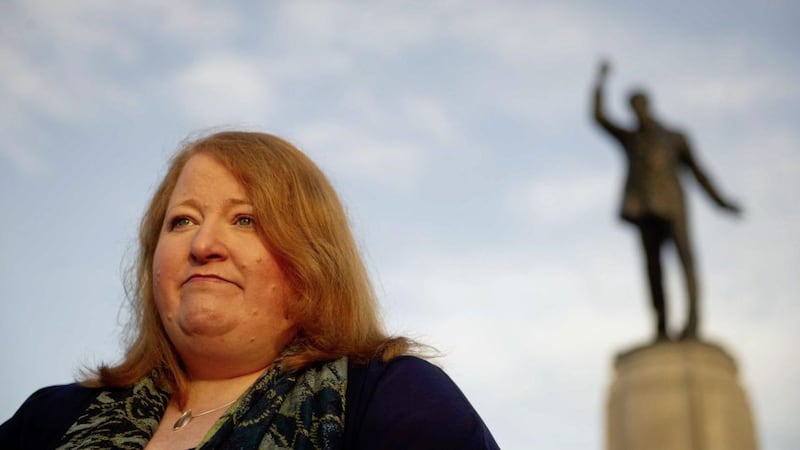THIS island has such a long tradition of marking anniversaries that the late politician and intellectual Conor Cruise O'Brien once warned: "We are commemorating ourselves to death."
It's true that commemorations can be divisive but hopefully the exceptions would include the anniversary of our illustrious poet and winner of the 1995 Nobel Prize in Literature, Seamus Heaney, who sadly left us on this day in 2013 at the age of 74 years.
I first met Seamus in my college days when I was studying for a Master's degree in Anglo-Irish Studies at University College Dublin and he was giving tutorials. It turned out that he was good friends with a first cousin of mine, Hugh Bredin, with whom he had shared a flat when both of them were students at Queen's University.
Soon after finishing the UCD course, I crossed the broad Atlantic and was living and working in New York when I saw a notice that Heaney would be taking part in a group poetry-reading at the New School for Social Research in Manhattan.
Read more:
Seamus Heaney's widow watches on as Joe Biden cites work of late Irish poet
Deaglán de Bréadún: Sinéad O' Connor, Sinn Féin and the courage of conviction
I went along and it hardly needs saying that Seamus was the star of the show. Indeed, after he gave his reading, a woman in the audience declared in a loud New York accent that he should be kept on stage for the rest of the evening: "This is awbviously a beautiful man."
Later I returned to Ireland and became a journalist with The Irish Times where my work included interviews from time to time with leading public figures. Seamus kindly agreed to talk to me at his house in Sandymount, a part of Dublin with strong connections to James Joyce, W.B. Yeats and short-story writer Frank O'Connor.
Those were the days before laptops took over our lives and I wrote up the conversation on an old-fashioned Underwood typewriter inherited from my father, which was very similar to the one James Connolly used at the General Post Office in Dublin during in the 1916 Rising.
Heaney's words filled page after page and, when I went downstairs to answer a knock on the front door, a gust of wind blew the interview out through a window that was left open.
Since most of the pages got tangled in the ivy on the back wall, I had to climb down a drainpipe to rescue them. Intrepid journalism or what?
Among the subjects we discussed was his 1979 poem The Strand at Lough Beg, dedicated to his second cousin Colum McCartney (22), who was shot dead by loyalists on August 24 1975 near Newtownhamilton, Co Armagh, along with Seán Farmer (32), when they were stopped at a bogus checkpoint on their way home from a Gaelic Football match in Dublin.
Colum also featured in Heaney's collection of poems titled Station Island which was about to be published shortly after the interview. Heaney focused on the human aspect of the tragedy and he told me: "You have a responsibility, I think, as a writer, to look at it in terms of human suffering rather than in terms of simple group loyalty."
Interestingly, Seamus described James Joyce as "a kind of intellectual Sinn Féiner" with an independent approach to language. The interview covered a wide range of issues and concluded on a humorous note as he described a trip to the village of Boolavogue in Co Wexford, where a rebel priest played a leading role in the 1798 rebellion.
He stopped a local man to ask for directions and said: "Is that where Father Murphy was?" The man must have been thinking of a more recent holder of the same name, because he replied: "It is, but there's a different priest there now."
Another important anniversary takes place tomorrow. The IRA ceasefire which set the scene for the Belfast/Good Friday Agreement of 1998 was announced on August 31 1994. That initial ceasefire broke down in February 1996 but was resumed in July 1997. I was one of the journalists who predicted the first cessation a week ahead of its formal announcement. Although I knew my information was reliable, reporting it was still quite a stressful experience.
In conclusion today, I need to tell you that my writings will appear less frequently in this newspaper in the future. An online search indicates that my column first appeared in February 2016 and the last seven years have been a very gratifying opportunity to analyse and comment on political developments north and south, as well as other matters.
Having spent so much time as a journalist covering the peace process it was good to still have a platform in the north, a place to which I became very attached.
One of my regular topics has been the likelihood or otherwise of a Sinn Féin-Fianna Fáil government after the next election in the Republic.
This coming Saturday September 2, at 2.30pm, I will be chairing a political debate in Dublin between Éamon Ó Cuív, Fianna Fáil TD and grandson of Éamon de Valera; Sinn Féin city councillor and former Lord Mayor of Dublin Micheál Mac Donncha and prominent trade unionist Mick O'Reilly.
Fellow-columnist Patrick Murphy is also due to take part in the three-day Desmond Greaves Summer School at the Ireland Institute, 27 Pearse Street, Dublin 2 (birthplace of 1916 leader Patrick Pearse). More information is available online at facebook.com/greavesschool








